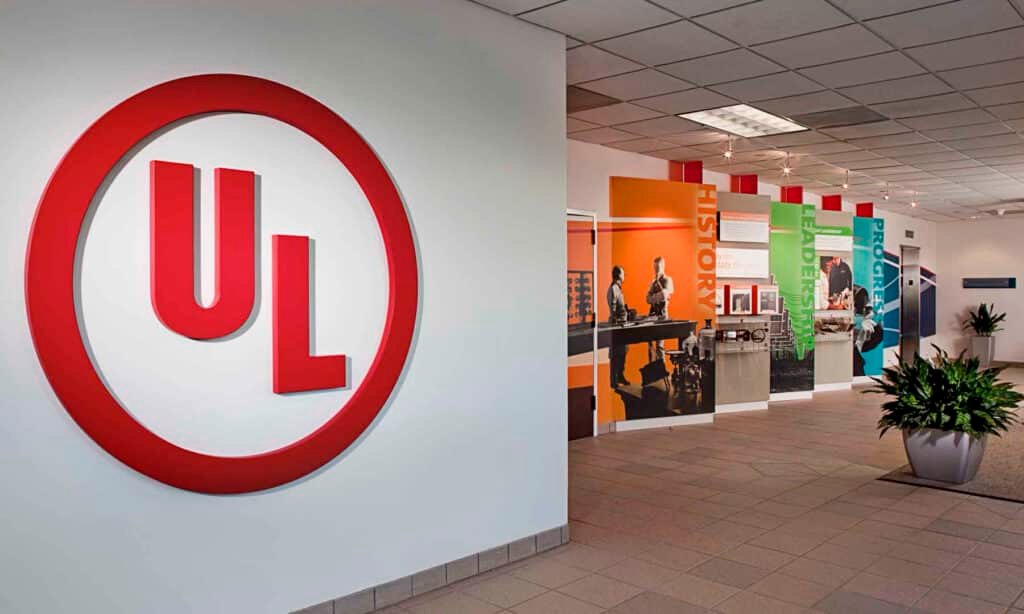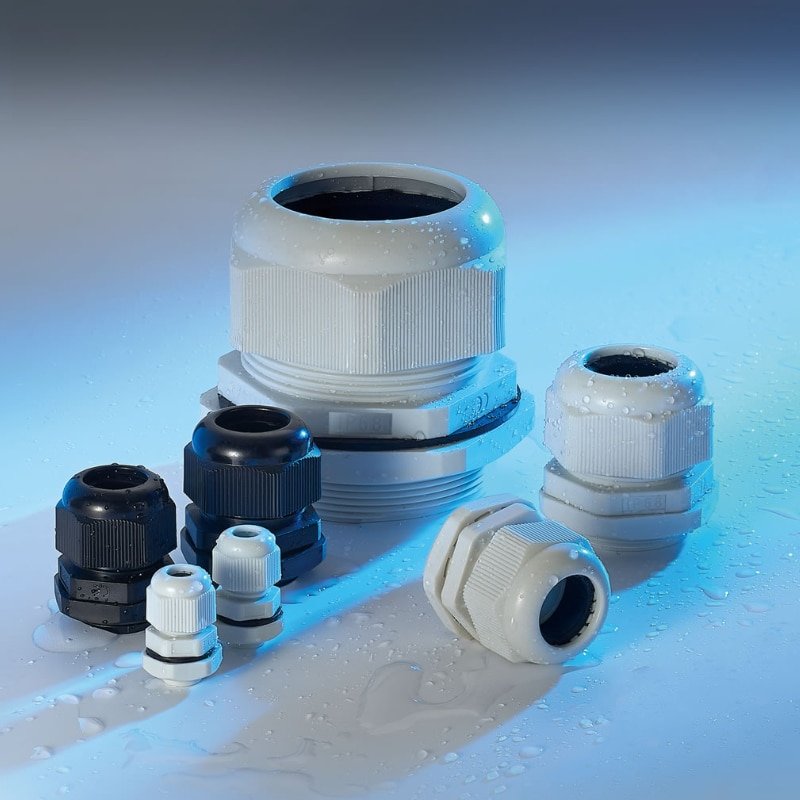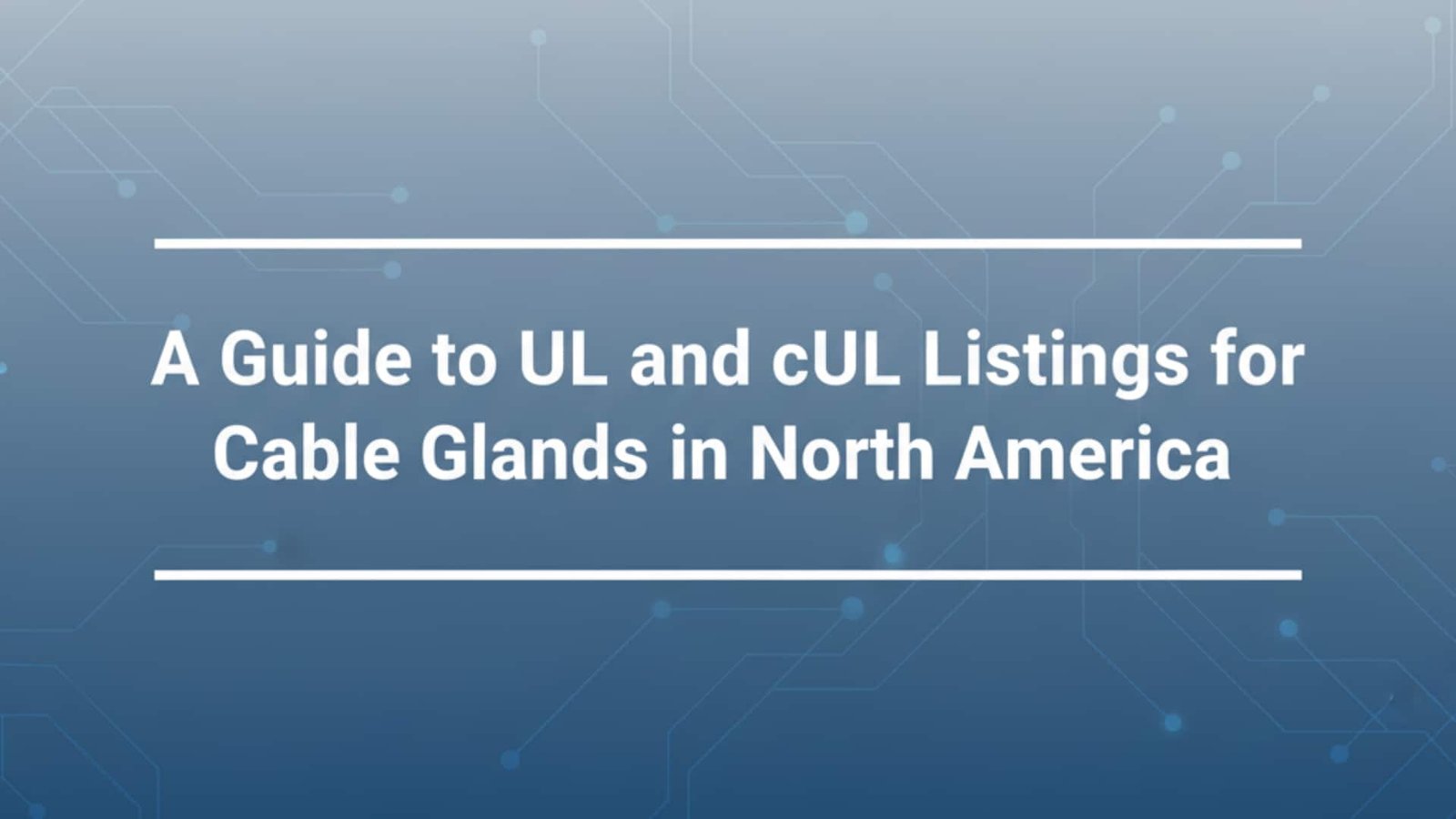
Last week, I received a frantic call from Michael, a project manager at a major automotive plant in Detroit. His team had just discovered that their cable glands weren’t UL listed, and their insurance company was threatening to void coverage. “Samuel,” he said, “we need UL listed cable glands immediately, but I don’t even understand what that means!”
UL and cUL listings are mandatory safety certifications for cable glands used in North American electrical installations. UL (Underwriters Laboratories)1 covers the United States market, while cUL (Canadian UL) ensures compliance with Canadian electrical codes, both verifying that products meet rigorous safety and performance standards.
This scenario happens more often than you’d think. Many companies discover compliance issues only when facing inspections, insurance claims, or project delays. After helping hundreds of North American clients navigate UL and cUL requirements over the past decade, I’ve learned that understanding these certifications isn’t just about compliance – it’s about protecting your business, your people, and your reputation. 😉
Table of Contents
- What Are UL and cUL Listings for Cable Glands?
- Why Are These Certifications Mandatory in North America?
- How Do You Verify Authentic UL and cUL Listings?
- What Are the Key Differences Between UL and cUL Requirements?
- Which Cable Gland Types Require UL/cUL Certification?
- FAQ
What Are UL and cUL Listings for Cable Glands?
Understanding UL and cUL listings starts with recognizing their fundamental purpose in electrical safety. UL and cUL listings are third-party safety certifications that verify cable glands meet specific North American electrical safety standards, including fire resistance, electrical performance, and mechanical durability requirements.

The Certification Process
UL and cUL listings involve comprehensive testing protocols:
- Electrical testing: Insulation resistance, dielectric strength, and current-carrying capacity
- Fire resistance: Flammability ratings and heat deflection temperatures
- Mechanical testing: Impact resistance, thread strength, and seal integrity
- Environmental testing: Temperature cycling, humidity exposure, and UV resistance
At Bepto, we maintain UL and cUL listings for our complete range of nylon, brass, and stainless steel cable glands. Our testing facility works directly with UL laboratories to ensure every product batch meets certification requirements.
Listed vs. Recognized Components
It’s crucial to understand the distinction:
- Listed products: Complete cable glands ready for installation
- Recognized components: Individual parts that may be used in listed assemblies
Most electrical installations require fully listed cable glands, not just recognized components. This distinction often catches buyers off-guard when they discover their “UL approved” components aren’t actually suitable for direct installation.
Why Are These Certifications Mandatory in North America?
The mandatory nature of UL and cUL listings stems from legal, safety, and insurance requirements that govern North American electrical installations. These certifications are required by the National Electrical Code (NEC)2 in the US and the Canadian Electrical Code (CEC)3 in Canada, making them legally mandatory for most commercial and industrial electrical installations.
Legal and Code Requirements
North American electrical codes specifically mandate UL/cUL listed components:
- NEC Article 110.3(B): Requires listed equipment for electrical installations
- CEC Rule 2-024: Mandates approved equipment meeting Canadian standards
- Local amendments: Many jurisdictions have additional requirements
- Inspection compliance: Electrical inspectors verify listings during code compliance checks
Insurance and Liability Protection
I learned this lesson firsthand when working with Sarah, a facility manager at a food processing plant in Toronto. Her insurance company discovered non-listed cable glands during a routine audit and immediately flagged it as a major liability issue.
Insurance implications include:
- Coverage denial: Claims may be rejected for non-compliant installations
- Premium increases: Higher rates for facilities with compliance issues
- Liability exposure: Personal and corporate legal risks for safety incidents
- Business interruption: Forced shutdowns until compliance is achieved
Safety Performance Standards
UL and cUL testing ensures cable glands perform safely under North American conditions:
| Safety Aspect | UL/cUL Requirement | Performance Benefit |
|---|---|---|
| Fire Rating | 94V-0 or better4 | Prevents fire spread |
| Temperature Range | -40°C to +105°C | Reliable operation in extreme conditions |
| UV Resistance | 1000+ hours exposure | Long-term outdoor durability |
| Impact Resistance | IK08 rating minimum | Mechanical damage protection |
How Do You Verify Authentic UL and cUL Listings?
With the prevalence of counterfeit certifications, verifying authentic UL and cUL listings has become critical for procurement professionals. Authentic verification requires checking the official UL database using the manufacturer’s UL file number, confirming the specific model numbers, and verifying that the physical markings match the database information exactly.
Official Verification Methods
UL Online Certifications Directory:
- Visit www.ul.com/database
- Search by company name, UL file number, or model number
- Verify exact model matches your requirements
- Check certification status and expiration dates
Physical Product Verification:
- UL listing mark must be molded or permanently marked
- File number format: E123456 (UL) or cE123456 (cUL)
- Model numbers must match database exactly
- Holographic security features on newer products
Red Flags to Avoid
Common signs of fraudulent certifications:
- Generic certificates: Real UL listings are product-specific
- Photocopied documents: Authentic certificates are issued electronically
- Missing file numbers: Every listed product has a unique UL file number
- Suspicious pricing: Genuine UL listed products command premium pricing
I once helped a client in Chicago who discovered their “UL listed” cable glands were counterfeit. The supplier provided convincing-looking certificates, but the UL database showed no record of the file numbers. This discovery saved them from potential legal and safety issues.
What Are the Key Differences Between UL and cUL Requirements?
While UL and cUL certifications share similar safety objectives, they have distinct requirements reflecting different national standards and testing protocols. The main differences lie in temperature ratings, environmental testing requirements, marking specifications, and applicable electrical codes, with cUL generally requiring more stringent cold temperature performance for Canadian climate conditions.
Testing Standard Variations
| Requirement | UL Standard | cUL Standard | Key Difference |
|---|---|---|---|
| Temperature Range | -40°C to +105°C | -50°C to +105°C | cUL requires lower cold performance |
| Humidity Testing | 95% RH, 40°C | 95% RH, 40°C + freeze cycles | cUL adds freeze-thaw testing |
| UV Exposure | 1000 hours | 2000 hours | cUL requires double exposure time |
| Impact Testing | Room temperature | -30°C impact testing | cUL tests cold weather impact |
Marking and Documentation
UL Marking Requirements:
- “UL Listed” mark with file number
- Temperature rating clearly marked
- Model number matching database
cUL Marking Requirements:
- “cUL Listed” or “cULus Listed” mark
- Bilingual marking (English/French) for consumer products
- Canadian electrical code compliance statement
Market Access Implications
Understanding these differences affects market strategy:
- US-only projects: UL listing sufficient
- Canada-only projects: cUL listing required
- Cross-border projects: cULus (combined) listing most efficient
- Cost considerations: Dual certification increases testing costs but expands market access
Which Cable Gland Types Require UL/cUL Certification?
Not all cable gland applications require UL/cUL certification, but understanding which ones do is essential for compliance and project success. UL/cUL certification is mandatory for cable glands used in commercial buildings, industrial facilities, hazardous locations, and any installation subject to electrical code inspection, while some residential and low-voltage applications may have different requirements.
Mandatory Certification Applications
Commercial and Industrial Installations:
- Office buildings and retail spaces
- Manufacturing facilities and warehouses
- Healthcare and educational facilities
- Data centers and telecommunications facilities
Hazardous Location Requirements:
- Class I, Division 1 and 2 locations (explosive gases)
- Class II, Division 1 and 2 locations (combustible dust)
- Class III locations (ignitable fibers)
- Marine and offshore installations
Product-Specific Requirements
Different cable gland types have varying certification needs:
Nylon Cable Glands:
- UL 514B standard for general use
- Temperature ratings: 105°C standard, 125°C available
- Flame rating: 94V-0 or 94V-2
- Common applications: HVAC, lighting, general wiring
Metal Cable Glands:
- UL 514B for standard applications
- UL 1203 for explosion-proof versions
- NEMA 4X corrosion resistance ratings
- Applications: Industrial control panels, hazardous areas
EMC Cable Glands:
- UL 514B plus EMC performance standards
- FCC Part 15 electromagnetic compatibility
- Applications: Sensitive electronic equipment, medical devices
Exemptions and Alternatives
Some applications may not require UL/cUL listings:
- Low-voltage systems: Under 50V DC or 30V AC
- Temporary installations: Construction sites, events
- Industrial machinery: Equipment with separate certifications
- Retrofit applications: Existing installations with grandfather clauses
However, I always recommend UL/cUL listed products even when not strictly required. The liability protection and performance assurance justify the modest cost premium.
Conclusion
UL and cUL listings aren’t just regulatory hurdles – they’re your assurance of safety, quality, and legal compliance in the North American market. Whether you’re specifying cable glands for a new facility or upgrading existing installations, choosing properly certified products protects your investment and your people. At Bepto, we maintain comprehensive UL and cUL listings across our product range because we understand that your success depends on reliable, compliant solutions. Don’t let certification confusion compromise your project – work with suppliers who understand North American requirements and can provide the documentation you need for confident decision-making.
FAQ
Q: How long does it take to get UL or cUL listing for cable glands?
A: The UL/cUL certification process typically takes 12-16 weeks from initial application to final listing. This includes product evaluation, testing, factory inspection, and documentation review. Rush services are available for an additional fee, potentially reducing timelines to 8-10 weeks.
Q: Can I use UL listed cable glands in Canada or cUL listed products in the US?
A: UL listed products are generally not accepted in Canada, and cUL listed products may not meet US requirements. The best solution is cULus listed products, which meet both US and Canadian standards and can be used in either country without restrictions.
Q: What happens if I install non-UL listed cable glands in a commercial building?
A: Installing non-listed cable glands can result in code violations, failed inspections, insurance coverage denial, and potential legal liability. Electrical inspectors will typically require replacement with properly listed products before issuing occupancy permits.
Q: How much more expensive are UL/cUL listed cable glands compared to non-listed versions?
A: UL/cUL listed cable glands typically cost 15-25% more than non-listed alternatives. However, this premium is offset by reduced liability risk, insurance compliance, faster approvals, and elimination of potential replacement costs due to code violations.
Q: Do I need different UL listings for different cable gland sizes?
A: UL listings typically cover a range of sizes within the same product family. For example, a single listing might cover M12 through M63 metric cable glands. However, different materials (nylon vs. brass) or special features (explosion-proof, EMC) require separate listings and file numbers.
-
Visit the official homepage of UL to learn about their history and mission as a global safety certification company. ↩
-
Access the official source for the NEC (NFPA 70) to understand its scope and provisions. ↩
-
View the official page for the CEC from the CSA Group, which outlines standards for electrical installations in Canada. ↩
-
Understand the technical details of the UL 94 vertical burn test and what the “V-0” rating signifies. ↩


